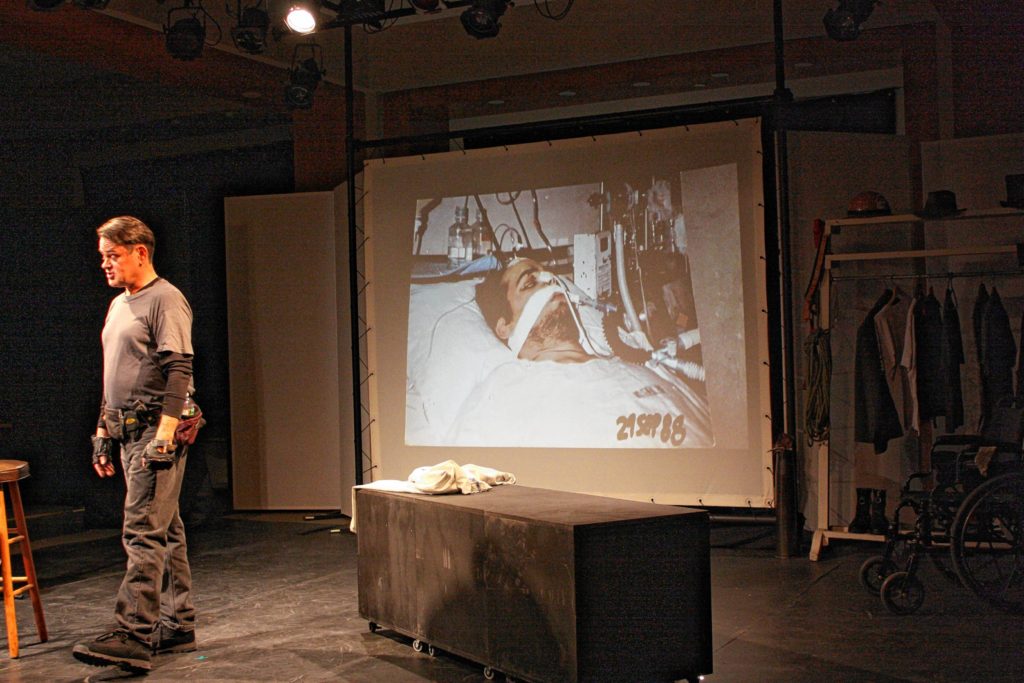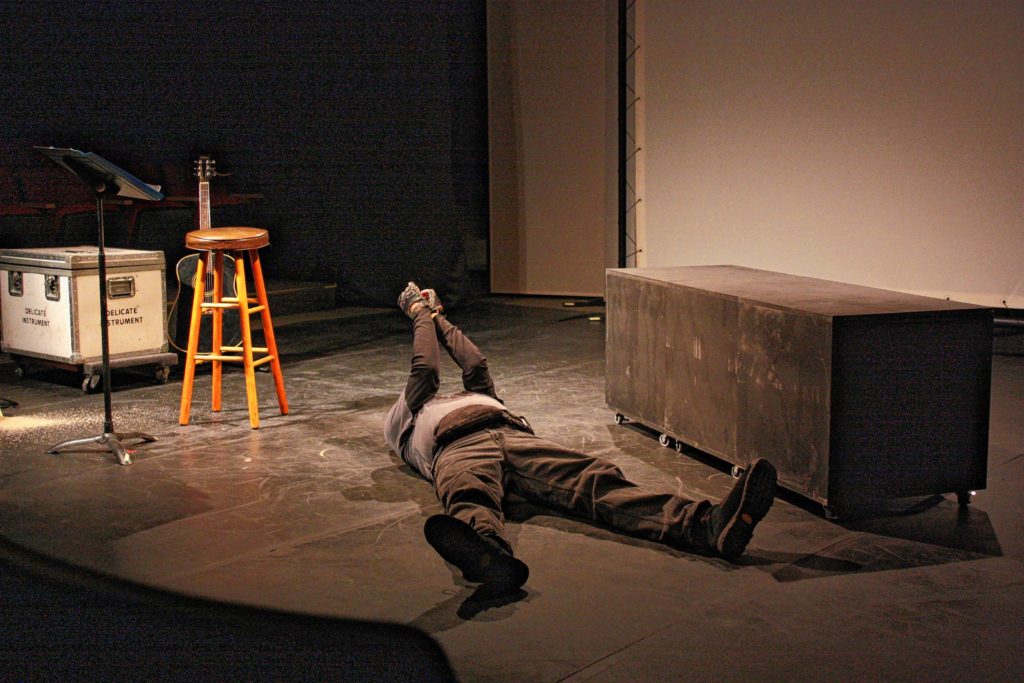When did you learn how to color? Do you remember when you first learned how to walk? What about forming sentences? When did you learn to do that?
For most people, the answer to these questions is something like, “I don’t know, when I was a little kid I guess.” But for some people, people who have suffered traumatic brain injuries, the answers might be something like, “Just a few months ago,” or, “I’m still working on it,” if that person is even capable of giving an answer.
Such is the theme of the one-man show The Learning Man, playing at Hatbox Theatre through Sunday (March 19).
The show’s creator and star, Alan Wilbar, suffered a 47-foot fall from the top of a circus tent where he had been working in 1988. He was then in a coma for 13 days, followed by 9 months in a wheelchair. After the fall, he explains in the show, he kind of had to start over in life and re-learn everything he had already learned years or even decades ago. The bulk of the show is Wilbar talking about the struggles he encountered on his lifelong journey to recovery.
The format of the presentation is a bit all over the place. The show begins with several loud, metallic clanks coming from behind the stage – after about five ear-splitting chimes Wilbar comes out holding what looks to be a large, spent artillery shell that he’s hitting with a hammer.
He then uses a pulley system to tug a sack of rice or sand up to the ceiling and then releases it, letting the bag fall to the ground and burst open – the contents of the bag would remain on the floor all night.
These demonstrations were symbolic actions, tying into the trauma the brain experiences during serious head injuries.
Symbolism is prevalent throughout the show, mostly in lyrical form. There are several poems sprinkled in through the telling of the story, each one relating to a different part of his recovery process. Apart from him prefacing each poem by saying, “The poem,” followed by the title, it was hard to discern the poetry from the rest of the narrative speaking. Wilbar’s regular conversational tone is pretty dramatic and could easily be mistaken for poetry reading.
There is also some music involved. Wilbar said that playing guitar has been a therapeutic experience for him, and he decided to try his hand at songwriting for the first time while he was recovering from his injury.
The result is a live show that features three or four original songs, all about his injury, some phase in his recovery process or the frustration and anger he felt many times during the whole ordeal.
As a technical critique, Wilbar would be well-served to bring a tuner with him to the next round of shows. The first song was delayed by some tuning by ear (which is very hard and takes a long time), and another tuning session was needed for a later song.
The other element of the show is a multimedia one. As Wilbar walks around the stage, acting out some scenes as he tells his story, a projection screen behind him occasionally flashes images relating to what he’s talking about. There are several shots of him in the hospital right after the fall. Sometimes there’s light background music to accompany the scenes, and sometimes in lieu of photos from Wilbar’s life there are stock images.
At the end, Wilbar tells the crowd that he hopes they learned something, and he opens it up to let people share their own stories.
If you’re looking for a different, eclectic and educational show, you’ll want to check this one out.
Go to hatboxnh.com for tickets.










